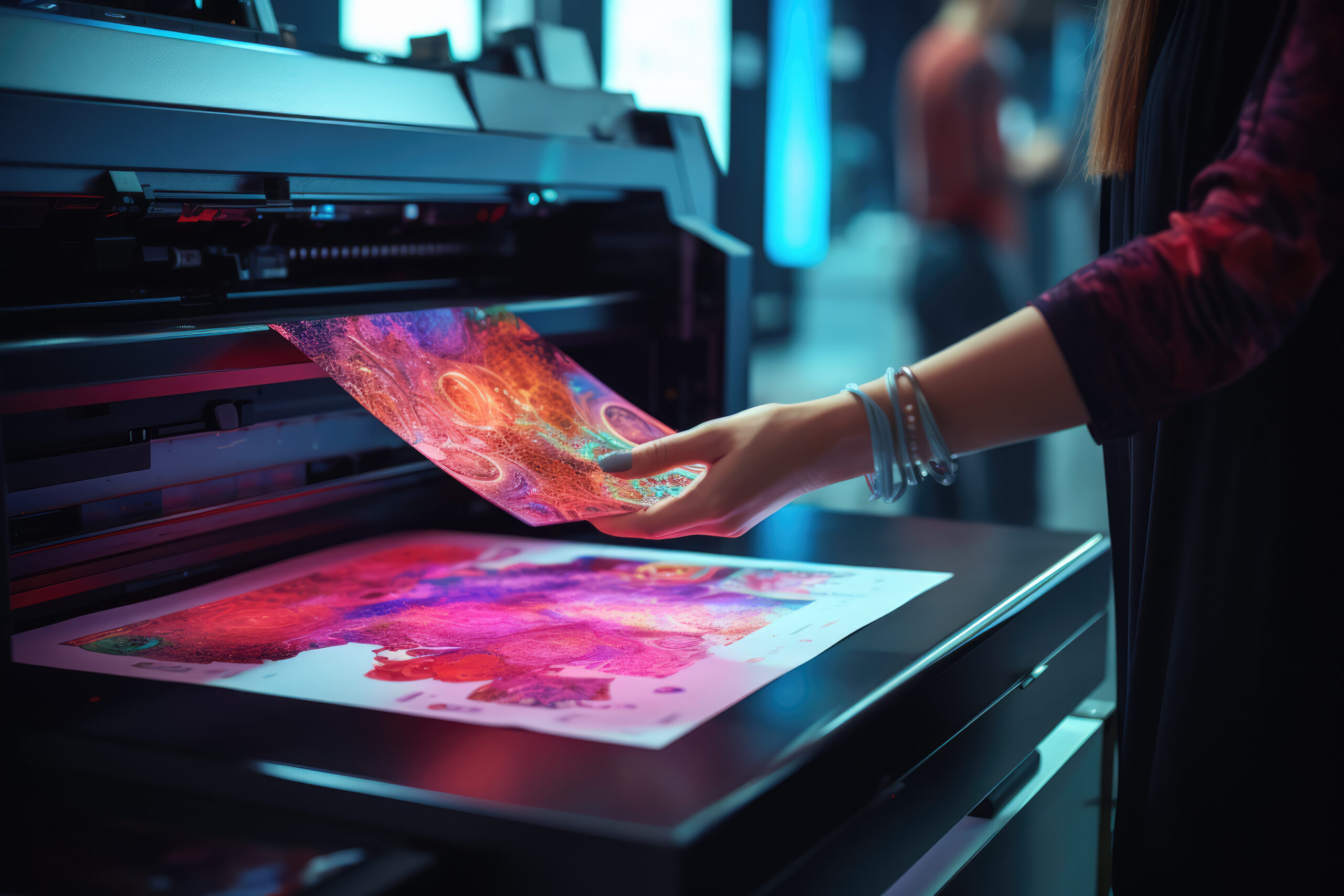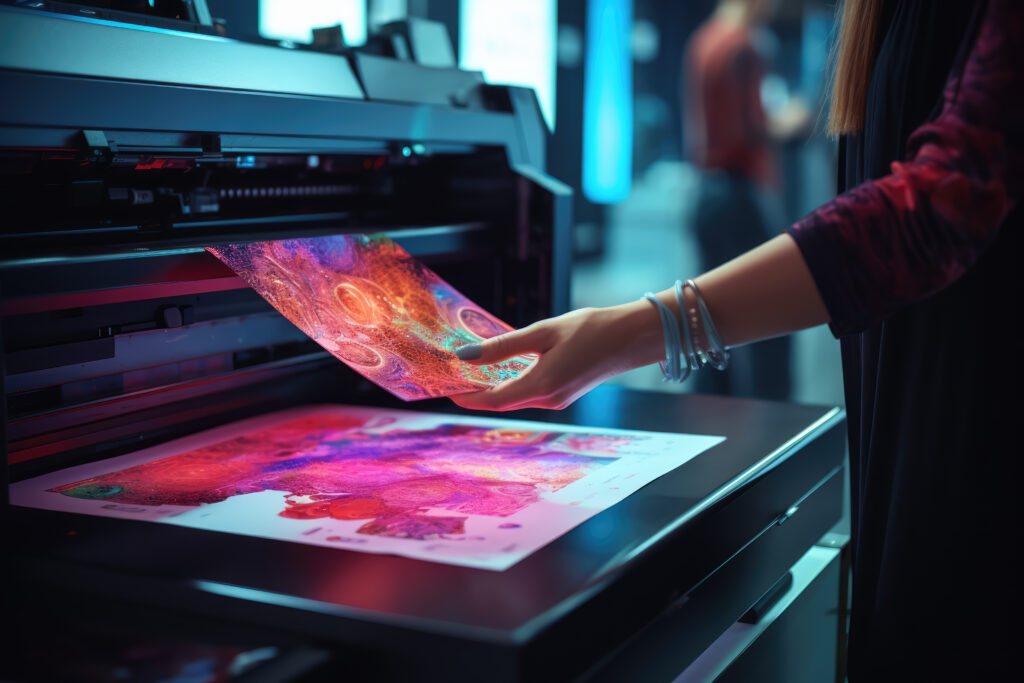The first time I witnessed a variable data print job in action, I stood mesmerized as thousands of completely personalized catalogs rolled off industrial presses, each one speaking directly to its intended recipient not just with a different name, but with tailored product recommendations, custom pricing tiers, and individualized messaging.
This was print marketing reborn—no longer the one-size-fits-all approach I’d grown up with, but something far more sophisticated and effective.
As a marketing director who once heavily favored digital channels, that moment fundamentally shifted my perspective on what modern printing technology could achieve.
Today’s printing innovations have silently revolutionized how brands connect with consumers in the physical realm, creating experiences that digital marketing—for all its targeting capabilities—still struggles to match. The tactile engagement, perceived value, and surprising technological integration offered by cutting-edge print has created new possibilities that savvy marketers are leveraging to stand out in an increasingly crowded digital landscape.
The Renaissance of Print in a Digital World
While digital marketing captured our attention with its metrics and scalability, print never actually disappeared—it evolved. What we’re witnessing now isn’t print’s last gasp but rather its sophisticated rebirth, powered by technologies that bridge physical and digital realms in ways that were science fiction just a decade ago.
The numbers tell an interesting story: while overall print volume has declined, the effectiveness of strategic print marketing has actually increased. Direct mail response rates have climbed to 9% for house lists (compared to email’s 1% average), according to the Data & Marketing Association. This isn’t happening despite digital transformation but because of it—modern printing technologies have made physical marketing materials more relevant, personalized, and integrated with digital experiences.
From Mass Production to Mass Personalization
The fundamental shift in printing technology isn’t about speed or quality (though both have improved dramatically)—it’s about flexibility and customization at scale. Variable data printing (VDP) has transformed traditional printing from producing thousands of identical pieces to creating thousands of unique pieces in a single run.
This technology connects printing systems directly to customer databases, allowing every element on a printed piece to change based on recipient data. Geographic location, past purchases, demographic information, and even behavioral data can now inform what offers appear, which images are featured, and how messaging is framed—all without slowing production speed.
What makes this particularly powerful is how it changes consumer perception. When I receive a catalog that features products relevant to my previous purchases displayed in seasonal contexts appropriate to my region, the experience feels less like marketing and more like service—a crucial distinction in winning consumer attention.
Sensory Marketing: When Physical Trumps Digital
Digital marketing excels at reaching audiences, but modern printing creates marketing you can feel—literally. The neuroscience behind this is compelling: physical marketing materials require 21% less cognitive effort to process and generate stronger emotional responses than digital alternatives, according to research from Temple University’s Center for Neural Decision Making.
Tactile Innovations That Digital Can’t Match
Today’s specialty printing techniques create sensory experiences impossible to replicate on screens. Soft-touch coatings that make brochures feel like velvet, thermochromic inks that change color with temperature, textured varnishes that create topographical landscapes on flat paper—these innovations engage multiple senses simultaneously, creating deeper brand impressions.
One particularly effective example I’ve encountered was a luxury automobile brochure that incorporated a varnish mimicking the exact texture of the car’s leather seats. This tactile sample created a powerful connection to the product that no digital experience could match, driving showroom visits from recipients at nearly triple the rate of the brand’s previous digital-only campaigns.
The scent marketing industry has also partnered with printing technology to create microencapsulated fragrances that release when scratched, allowing fragrance brands, food companies, and even real estate marketers to engage the most powerful sense tied to memory and emotion—something digital marketing simply cannot access.
Bridging Physical and Digital: The New Print Technologies
Perhaps the most transformative development in modern printing has been its integration with digital experiences through technologies that use physical materials as gateways to online environments.
The Invisible Revolution: NFC, AR, and QR Renaissance
Near Field Communication (NFC) tags embedded within printed materials now allow consumers to tap brochures, packaging, or signage with their smartphones to instantly launch digital experiences—no apps or scanning required. These paper-thin chips can trigger everything from product videos to instant purchasing options, loyalty program registration, or augmented reality experiences.
QR codes, once dismissed as clunky and outmoded, have experienced a global revival thanks to camera integration in smartphones eliminating the need for special apps. When coupled with modern design approaches that integrate codes aesthetically into materials rather than appearing as afterthought boxes, they’ve become seamless bridges between print and digital worlds.
The most sophisticated implementations I’ve seen combine printed materials with augmented reality, where pointing a smartphone at an otherwise standard-looking page transforms it into an interactive 3D experience. A recent catalog for architectural fixtures allowed recipients to visualize lighting fixtures in their own spaces through AR, then customize finishes and dimensions before ordering—all initiated through a printed page.
Sustainability Meets Innovation
Environmental concerns once positioned print as digital’s less sustainable cousin, but modern printing technologies have dramatically shifted this equation. Advances in printing now include:
- Algae-based inks that absorb carbon dioxide
- Embedded seeds allowing marketing materials to be planted after use
- Precision application technologies that reduce ink and water usage
- Closed-loop production systems minimizing waste
For brands with authentic environmental commitments, these innovations transform printed marketing materials from environmental liabilities into demonstrations of values—and even functional tools for environmental improvement.
Modern printing technology has transcended its historical limitations to become a sophisticated marketing channel that offers unique advantages in a digitally saturated world. The most effective marketing strategies now recognize that print’s evolution hasn’t positioned it in competition with digital but as a complementary channel that offers different strengths—physical engagement, perceived value, and sensory experiences that screens cannot replicate.
The future belongs to marketers who understand how to orchestrate these channels, using each for what it does best while creating seamless consumer journeys between physical and digital touchpoints. In this integrated future, print isn’t beyond digital—it’s alongside it, each amplifying the other’s impact in a marketing ecosystem that engages consumers more effectively than either could alone.



